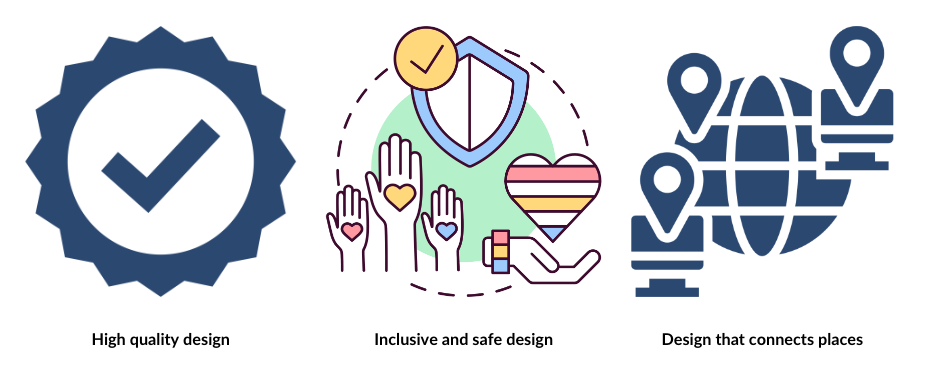Issues and options
Managing development
The policies for managing development are here. This set of policies covers:
High quality design - this goes beyond aesthetics; it encompasses functionality, sustainability, and a sense of place. High quality design means integrating the principles of good urban design, such as creating safe and accessible environments, promoting active travel, and fostering social interaction.
Inclusive and safe design - this lies at the core of our local plan, reflecting our commitment to creating communities that are welcoming, accessible, and secure for all residents.
Public realm and connecting places - this encompasses a range of interconnected elements, including streets, squares, parks, and waterfronts, designed to facilitate movement, encourage social interaction, and foster a sense of community belonging.

Building heights - guidelines and regulations aimed at ensuring harmonious urban development while respecting the unique character and scale of our locality. By specifying maximum building heights in different areas, we seek to create a cohesive urban fabric that enhances the visual quality of our built environment and preserves important views and sightlines.
View management - this encompasses the identification of key viewpoints, landmarks, and scenic routes, as well as the establishment of guidelines and safeguards to protect these valued assets from inappropriate development or visual encroachment.
Optimising site capacity - this entails carefully assessing the potential of each site to accommodate development in a manner that optimises its capacity without compromising on quality or sustainability. Factors such as the site's size, location, existing infrastructure, environmental constraints, and surrounding context are taken into consideration to determine the appropriate scale and density of development.
Amenities - this encompasses a broad range of facilities and services that contribute to the quality of life and well-being of our residents. This includes but is not limited to parks, playgrounds, sports facilities, libraries, community centers, healthcare services, schools, public transportation networks, shops, and cultural venues.
Lighting - we recognise the importance of well-designed and appropriately positioned lighting to create welcoming and inclusive public spaces, support nighttime economic activities, and promote active and healthy lifestyles.
Building alterations - these alterations encompass a wide range of activities, including renovations, extensions, conversions, and refurbishments. Our goal is to ensure that building alterations are carried out in a manner that respects the character and integrity of our communities while meeting the needs of residents and businesses.
Infilll and backland sites - refers to areas within existing built-up areas that have the potential for development, typically located between or behind existing buildings. These sites are often characterized by underutilized or vacant land, including small pockets of land within residential, commercial, or industrial areas.
Shop fronts - storefronts play a crucial role in shaping the character and vitality of our town centers and high streets. Our policies aim to promote attractive, well-designed shop fronts that enhance the visual appeal of our retail areas, contribute to a sense of place, and support local economic activity.
Outdoor advertisments and billboards - our approach to regulating outdoor advertisements and billboards seeks to strike a balance between supporting economic activity, fostering vibrant commercial districts, and preserving the visual amenity and character of our surroundings.
